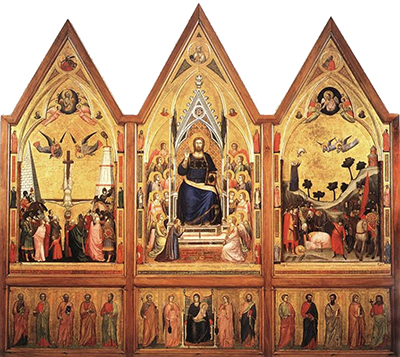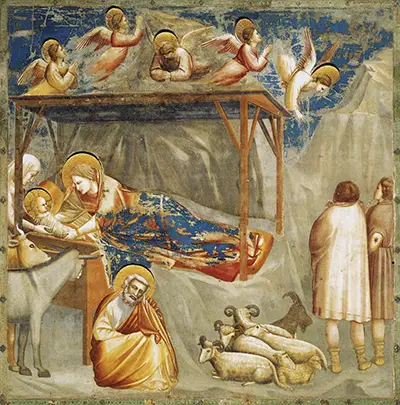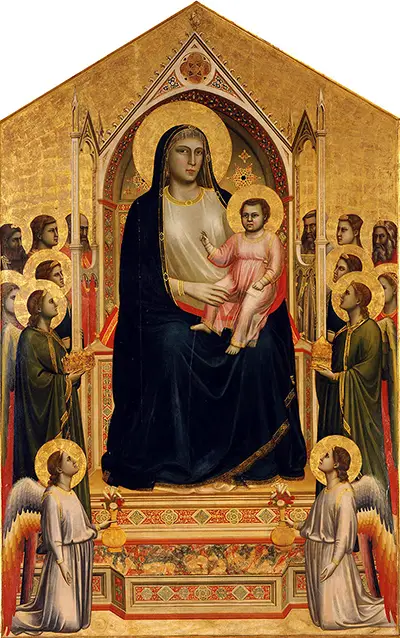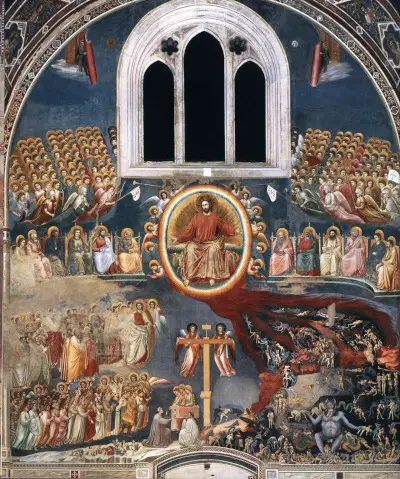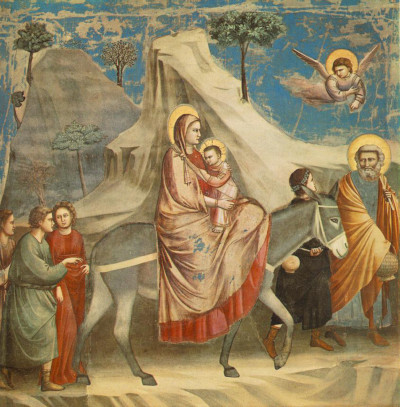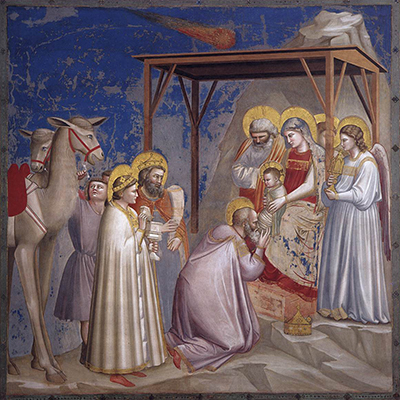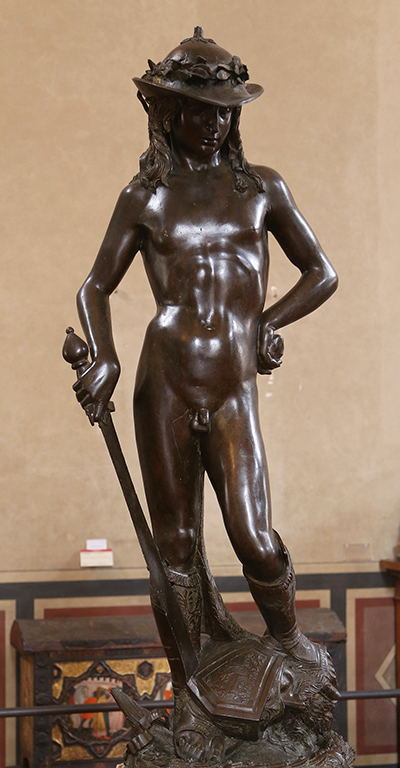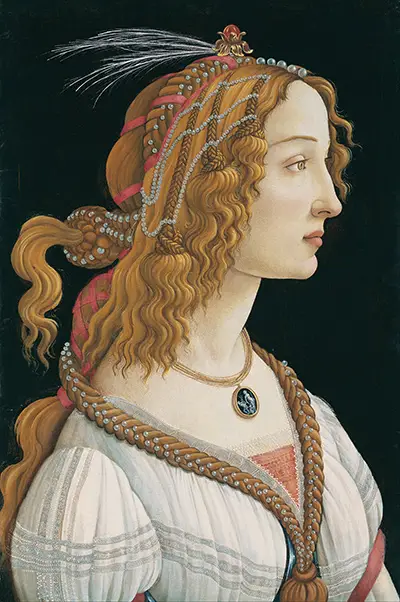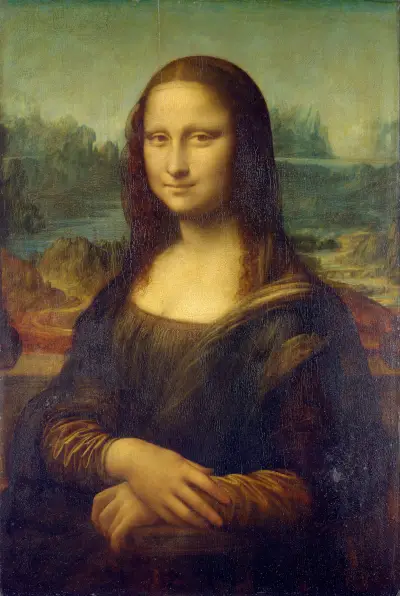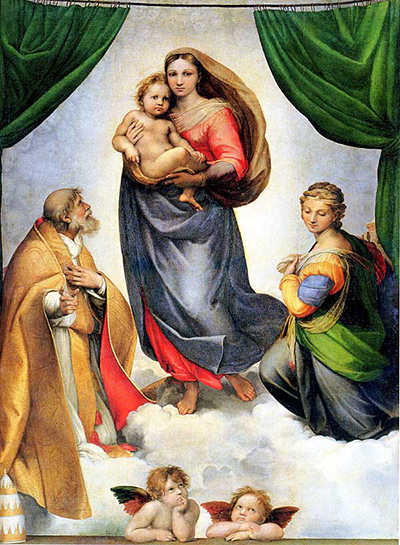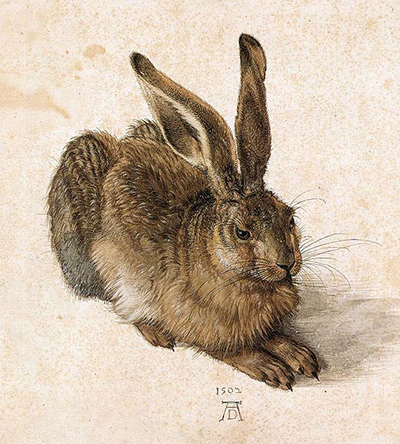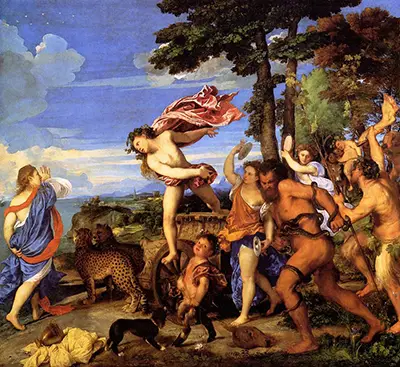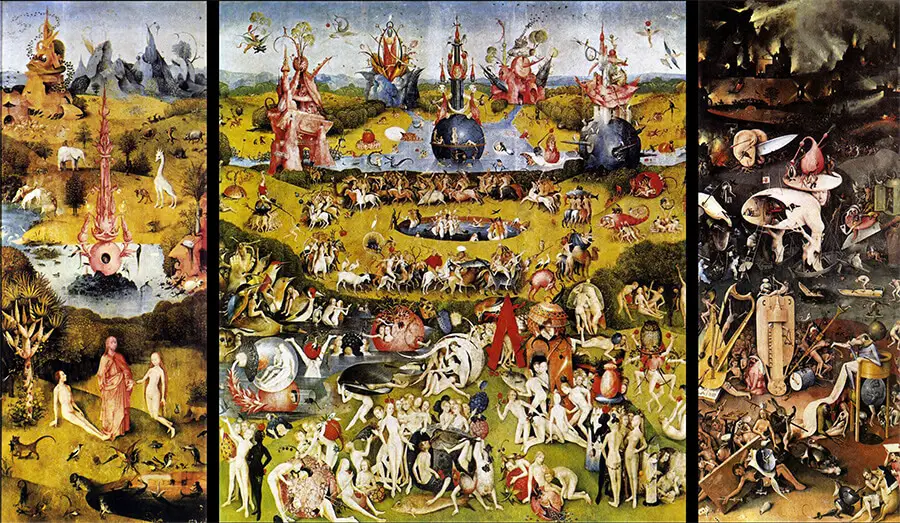The Peruzzi Altarpiece was one of Giotto’s most famous works within this format. The piece features five portraits lined up together.
Layout of the Altarpiece
Centrally, we find Christ Blessing. From left to right, the remaining four portraits feature St John the Evangelist, the Virgin Mary, St. John the Baptist, and St. Francis. Each portrait is placed onto a golden background, and then framed below an arched panel.
Composition
Jesus Christ is sized slightly larger than the other portraits, and this combined with his central positioning immediately notifies the viewer of his significance. He holds a bound book in his left hand, whilst blessing us with his right.
A faint cross also appears from behind his figure. The original artwork is now to be found at the The North Carolina Museum of Art, making it one of the few Giotto paintings to be found in North America. The fragility of his work, as well as the nature of fresco installations, means that most of his paintings remain in their original positions.
Purpose
Altarpieces such as this would have served to remind religious followers of the importance of figures such as this within their faith. Stunning art such as this could help to reinforce their beliefs, and bring a visual support to the powerful scripture.
Commission
The item is known as the Peruzzi Altarpiece as it was this wealthy family who originally commissioned the work. Giotto planned the piece for a small private chapel within the Church of Santa Croce and sized it accordingly for one of the walls in that building.
The piece was painted onto a poplar panel which was a highly popular type of wood for artists at this time. Oil painting would arrive in Italy many years later, and so tempera was used by Giotto during the early 14th century.
Date
The Peruzzi Altarpiece is loosely dated to around 1310-1315, by which time Giotto had peaked as an artist and was enjoying some of the most prestigious commissions of his career. This item is believed to have been Gifted to its present owners via the Samuel H. Kress Foundation.
Technique and Medium
The altarpiece was constructed using tempera over golden leaf paint across a large wooden panel which measures approximately eight feet wide by three feet tall. The size is inevitably large because of how it would likely have been viewed from a long distance by many of the church’s congregation.
The increased size also allows the artist plenty of room to incorporate considerable detail. Although the portraits are relatively simple, Giotto can focus on precise brushwork around the facial features. He avoids highly decorative patterns and elements of symbolism, in the main, which were often used elsewhere in his oeuvre.
Conclusion
The Peruzzi Altarpiece is a rare treat for North American followers of 13th and 14th century Italian art. It remains famous because of its current location, but also can be considered a stunning artwork in its own right. We also see Giotto close to the peak of his powers in this painting, with it coming towards the end of his career.
More Renaissance Artists



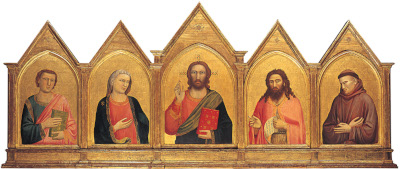
 Giotto.jpg)
 Giotto.jpg)
